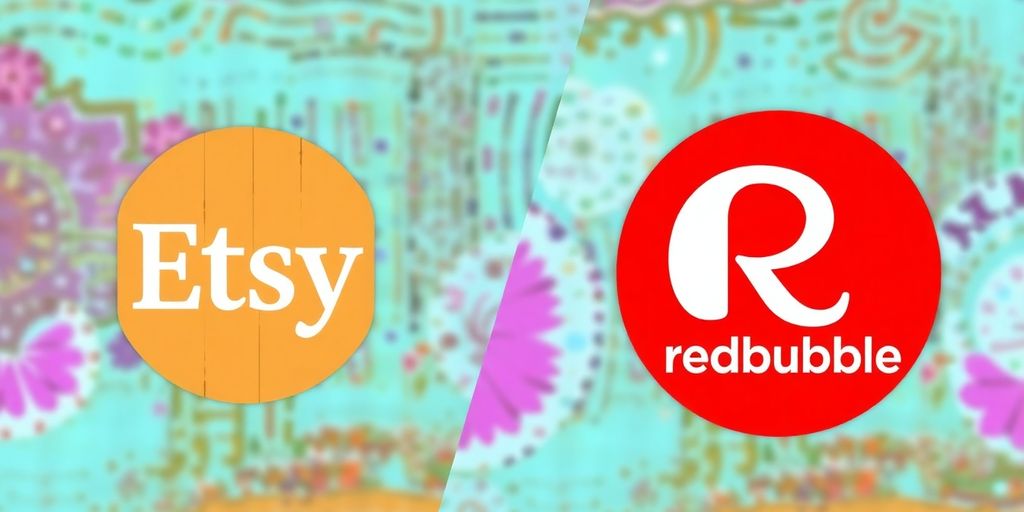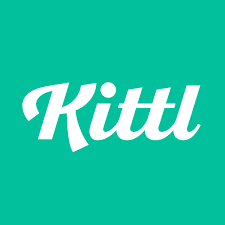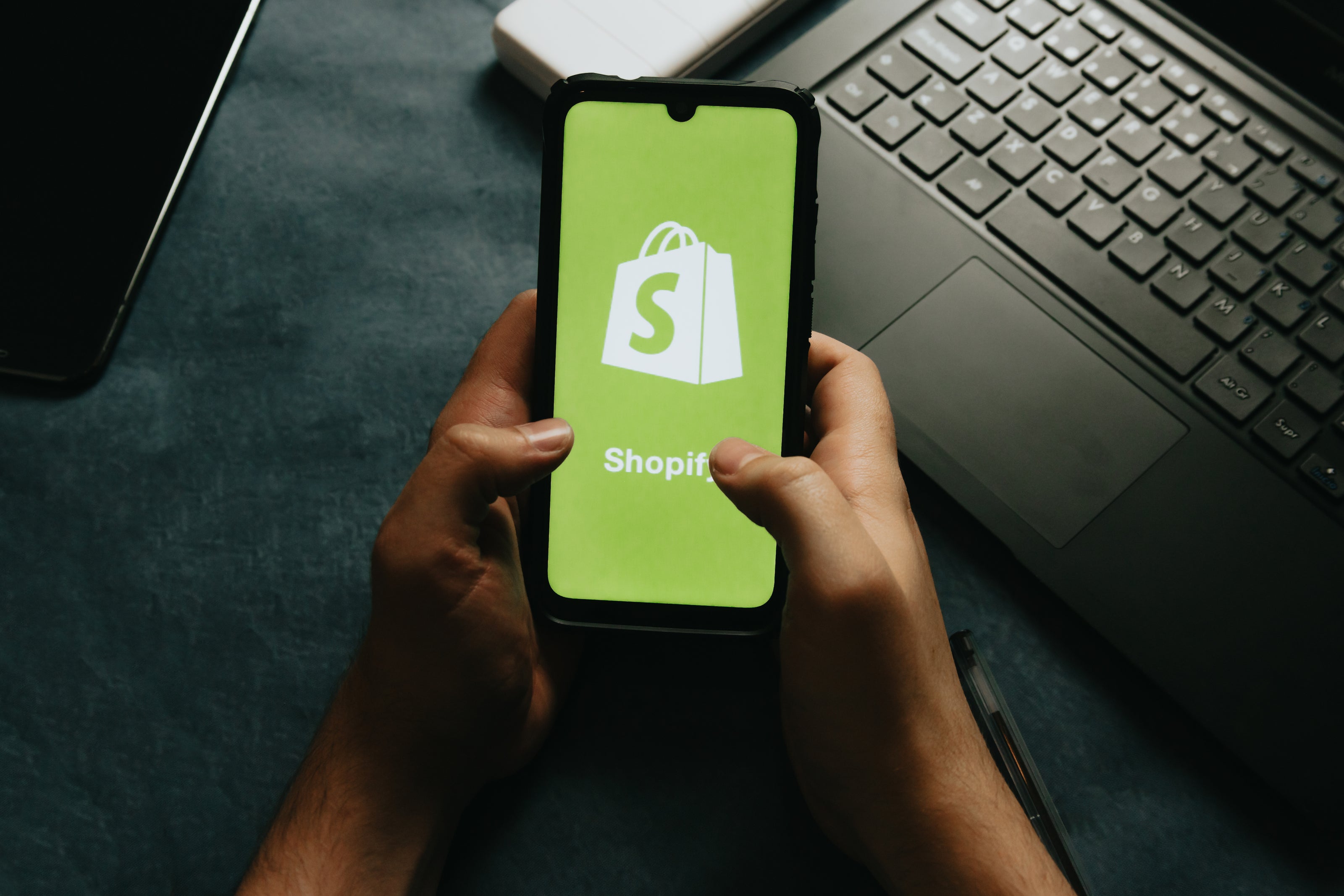
Etsy vs redbubble: Which platform suits you best
Share
Redbubble vs Etsy: Which One Is Right for You?
Thinking of selling online but not sure where to start? Etsy and Redbubble are two of the biggest names in the world of ecommerce, each catering to different types of sellers. Whether you want to sell handmade goods or use a print-on-demand company, both platforms offer unique advantages.
Etsy is traditionally known for being a marketplace for handmade, vintage and craft supply items, making it the go-to platform for artisans and crafters. However, Etsy is also a print-on-demand marketplace, thanks to integrations with services like Printful and Printify. This allows sellers to offer custom designs on products like mugs, t-shirts and tote bags—without needing to handle production or shipping.
Redbubble, on the other hand, is a print-on-demand company that takes care of everything—from printing to shipping—making it an ideal choice for artists who want a passive way to monetize their work. You upload your designs and Redbubble prints them on various products like clothing, accessories and home decor.
So, which platform is better for your business? Let’s dive deeper into the key differences between Etsy and Redbubble so you can decide which one best suits your goals.
Redbubble vs Etsy - Key Takeaways
- Etsy is ideal for sellers of handmade goods, vintage items and craft supplies but also supports print-on-demand through third-party integrations.
- Redbubble is a full print-on-demand marketplace, meaning artists can upload designs and let Redbubble handle everything from printing to shipping.
- Etsy sellers have more control over branding, customer service and pricing, while Redbubble operates on a commission-based model where artists earn a percentage of sales.
- Etsy requires hands-on involvement with order fulfillment unless using print-on-demand integrations, while Redbubble is completely automated.
- If you want to sell handmade goods with custom branding, Etsy is the better option. If you prefer a hands-off approach to selling online, Redbubble is more suitable.
Understanding the Core Differences Between Etsy and Redbubble

Etsy is known as a marketplace for artisans, crafters and vintage sellers. It’s the perfect platform for selling unique, handcrafted goods or antiques. Etsy shoppers are often looking for one-of-a-kind products with a personal touch, making it an excellent choice for creatives who enjoy making and shipping their own products.
But Etsy isn’t just for handmade sellers—it also works as a print-on-demand marketplace. By integrating Etsy with a print-on-demand company like Printful, Printify, or Gooten, sellers can offer customized items without ever touching the inventory. This means you can sell t-shirts, mugs, posters and more—just like on Redbubble—but with greater control over branding and pricing.
Redbubble’s Print-on-Demand Model
Redbubble is a print-on-demand company designed specifically for artists and graphic designers. It allows sellers to upload digital artwork and have it printed on a variety of products, from clothing to stickers and phone cases. The biggest advantage of Redbubble is its hands-off fulfillment process—they handle production, shipping and customer service, so all you have to do is focus on creating new designs.
Since Redbubble operates as a print-on-demand marketplace, it attracts buyers looking for creative and artistic products. However, unlike Etsy, you have little control over branding, packaging, or customer interaction. Redbubble sets the base prices for products and you earn a royalty from each sale rather than setting your own profit margins.

Target Audience for Each Platform
While both platforms cater to creative entrepreneurs, their target audiences differ:
- Etsy buyers tend to seek handmade goods, vintage items, or personalized gifts. Many shoppers are looking for high-quality craftsmanship, unique home decor, or special occasion gifts.
- Redbubble shoppers are often interested in artistic designs and quirky prints. Customers typically browse for cool t-shirts, stickers and accessories featuring independent artists’ work.
If you’re selling handmade goods or customized items, Etsy might be the better fit. But if you want to sell artistic designs with a print-on-demand company, Redbubble is the easier option.
Setting Up Your Shop: Etsy vs Redbubble
Ease of Account Creation
Both Etsy and Redbubble make it easy to start selling. You don’t need advanced tech skills to set up your store.
- Redbubble: Simply create a free account, add your shop details and start uploading designs. You don’t need to handle production, pricing (beyond your markup), or shipping.
- Etsy: You need to register an account, set up your payment methods and pay a small listing fee for each item. If you’re using a print-on-demand company like Printify, you’ll need to connect your Etsy shop to the service before uploading products.

Listing Products on Etsy
Since Etsy supports both handmade goods and print-on-demand, listing an item depends on what you’re selling:
- Handmade/Vintage Items: You’ll need to write a detailed product description, categorize your listing, set your own prices and arrange shipping.
- Print-on-Demand Products: If using a print-on-demand marketplace integration, the process is easier. Once you connect Etsy to a service like Printful, the products are automatically listed and the fulfillment is handled for you.
Etsy gives sellers full control over pricing and branding, which can help establish a loyal customer base.
Uploading Designs on Redbubble
Redbubble takes a fully automated approach to selling online. You upload a digital design and Redbubble applies it to various products like:
- T-shirts and hoodies
- Stickers and phone cases
- Mugs and water bottles
- Home decor and stationery
Once a customer places an order, Redbubble handles everything from printing to shipping. The only downside is that you don’t have control over branding or packaging—customers receive their orders directly from Redbubble, not from you.

Product Range and Customization Options
Types of Products Sold on Etsy
Etsy is like a treasure trove for artisans and vintage lovers. It's the go-to place for handmade items, vintage finds and craft supplies. Sellers on Etsy offer a wide variety of unique products, from handcrafted jewelry to vintage clothing and home decor. This platform is perfect for those who want to showcase their creativity and offer something truly special.
Customization Features on Redbubble
Redbubble operates on a print-on-demand model, which means you can upload your designs and have them printed on various products. While customization is limited to the design stage, it offers a broad range of items like t-shirts, phone cases and art prints. This setup is ideal for artists who want to focus on creating art without worrying about inventory or shipping.
Unique Selling Points of Each Platform
Both Etsy and Redbubble offer unique advantages for sellers, but their strengths cater to different types of businesses. Whether you prefer a hands-on or hands-off approach to selling online, understanding what sets each platform apart will help you choose the best fit for your needs.
Etsy: A Marketplace for Handmade Goods and Print-on-Demand Sellers
Etsy is widely recognized as the go-to platform for handmade goods, vintage items and craft supplies, but it also supports print-on-demand sellers through integrations with services like Printful and Printify. The platform's biggest strengths include:
- Creative Control – Sellers have complete control over pricing, branding and product presentation. Unlike Redbubble, Etsy allows you to customize your store, set your own profit margins and even include branded packaging if you handle fulfillment yourself.
- Diverse Product Offerings – While Etsy is known for handmade goods, its print-on-demand marketplace model enables sellers to offer customized t-shirts, mugs, phone cases and more, all without managing inventory.
- Direct Customer Interaction – Etsy allows sellers to engage with their customers, handle inquiries and provide personalized customer service. This helps build strong relationships and brand loyalty.
- SEO and Marketing Opportunities – Etsy's built-in search engine optimization (SEO) tools and marketing features, such as Etsy Ads and social media integration, can help sellers attract more customers.
- Higher Profit Potential – Because you set your own prices and can offer premium, customized products, Etsy provides better opportunities for sellers to maximize profit margins.
However, Etsy does require more involvement in order fulfillment, shipping and customer service, unless you use a print-on-demand company to automate these processes.

Redbubble: A Hassle-Free Print-on-Demand Marketplace
If you’re an artist who loves creating but dreads the logistics of selling, Redbubble's print-on-demand company model might be the perfect solution. This platform is designed for artists and designers who want to sell online with minimal effort. The key advantages of Redbubble include:
- No Need to Handle Inventory or Shipping – Redbubble takes care of printing, packaging and shipping, making it a passive income opportunity for creatives. You simply upload your designs, choose your products and let Redbubble do the rest.
- Automatic Customer Support – Unlike Etsy, where sellers must manage inquiries and returns, Redbubble handles customer service directly, saving you time and hassle.
- Wide Range of Print-on-Demand Products – Redbubble allows you to sell designs on a variety of items, including clothing, stickers, home decor, phone cases and stationery.
- No Upfront Costs or Listing Fees – You don’t pay anything to list products on Redbubble. Instead, you earn a percentage of each sale based on the markup you set. This makes it a low-risk way to sell online without initial investment.
- Built-In Audience for Artists – Redbubble attracts shoppers looking for unique, artist-created designs, meaning there’s already a market for your work.
However, Redbubble does have some limitations:
- Lower Profit Margins – Since Redbubble sets base prices for products and only allows artists to add a markup, earnings per sale can be lower than Etsy.
- Limited Branding Control – Unlike Etsy, you cannot customize packaging or create a unique brand identity. All orders are fulfilled under Redbubble’s name.
- No Direct Customer Interaction – While this can be a positive for those who dislike customer service, it also means you can’t build personal relationships with buyers or upsell products.

Cost and Fees: What to Expect
When deciding between Etsy and Redbubble, understanding the cost and fee structures of each platform is key. Let's dive into the specifics of what you can expect from each.
Etsy's Fee Structure
Etsy's fee system can feel a bit like a maze at first. Here's a breakdown:
- Listing Fee: Every time you list an item, you're charged $0.20. This fee is applied whether or not your item sells.
- Transaction Fee: Once an item sells, Etsy takes a 6.5% cut from the total sale price, which includes shipping.
- Payment Processing Fee: Depending on your location, this fee is generally around 3% + $0.25 per transaction.
In addition to these, Etsy offers an optional subscription called Etsy Plus, which provides advanced features for a monthly fee. Despite the fees, many sellers appreciate the control Etsy offers over pricing and inventory.
Redbubble's Pricing Model
Redbubble's approach is more straightforward. There are no upfront costs like listing fees. Instead, they operate on a royalty-based system:
- Base Price: Each item has a base price that covers production and fulfillment.
- Markup: You decide your profit by setting a markup percentage over the base price.
This model is appealing because it eliminates the need for upfront investment. However, while Redbubble doesn't charge listing or transaction fees, the base prices can limit your profit margins.
Comparing Profit Margins
Choosing between Etsy and Redbubble often boils down to potential earnings. With Etsy, you have the flexibility to set your prices, which can lead to higher profits if managed well. On the flip side, Redbubble's fixed base price can restrict your profit margins, but it simplifies the selling process.
"In the end, your choice might depend on whether you prefer the hands-on control Etsy offers or the low-maintenance appeal of Redbubble's print-on-demand model."
Both platforms have their unique advantages and understanding these cost structures will help you decide which one aligns best with your business goals.

Marketing and Integration Tools
Etsy's Marketing Features
Etsy offers a host of marketing tools designed to help sellers boost their visibility and sales. One of the standout features is Etsy Ads, which allows sellers to promote their listings directly on the platform. You can set your daily budget and Etsy will automatically place your ads in front of potential buyers. Besides, Etsy also provides detailed analytics so you can track how your ads are performing and adjust your strategy accordingly.
Another handy tool is Etsy's social media integration, which lets you share your products seamlessly on platforms like Facebook, Instagram and Pinterest. This can be a game-changer for reaching new audiences without spending a dime.
Engaging with your customers through reviews and messages on Etsy can also build trust and encourage repeat purchases.
Redbubble's Social Media Integration
Redbubble, on the other hand, leans heavily on social media for marketing. With its integrated sharing tools, you can easily showcase your designs on social networks. This is particularly useful for artists who want to build a following and drive traffic to their Redbubble store.
Redbubble also encourages sellers to use hashtags and engage with communities on platforms like Instagram and Twitter. This organic approach can be very effective if you are consistent and creative with your posts.
Third-Party App Support
Both Etsy and Redbubble provide support for third-party apps, though the scope and functionality might differ. Etsy has a more extensive marketplace for apps that can help with everything from inventory management to accounting. This flexibility allows sellers to customize their workflow and streamline operations.
Redbubble's third-party integrations are more focused on design and social media tools, which aligns with its print-on-demand model. This can be particularly beneficial if you're looking to enhance your product images or use design tools like Printful and Printify to manage your print-on-demand operations.
In conclusion, both platforms offer unique marketing and integration tools that cater to different seller needs. Whether you're more inclined towards Etsy's comprehensive advertising options or Redbubble's social media-centric approach, understanding these tools can significantly impact your business strategy.
Customer Service and Support
Etsy's Seller Support System
Etsy offers a robust support system for sellers. Sellers can reach out 24/7 via chat, email, or phone, ensuring help is always at hand. The platform also features a detailed help center and a comprehensive seller handbook, which guides users through common challenges. Moreover, Etsy's community forums are vibrant spaces where sellers can exchange tips and advice.
Redbubble's Customer Care Approach
Redbubble's support leans heavily on email communication, focusing primarily on customer inquiries. They offer a specialized help center that addresses product and order-related questions. While their response time varies, most issues are resolved within a few days. Redbubble's community engagement is less interactive compared to Etsy, but it still provides essential support.
Community Engagement on Both Platforms
Both Etsy and Redbubble have their unique ways of fostering community engagement. Etsy's forums are bustling with activity, allowing sellers to share experiences and solutions. Redbubble, while less focused on community interaction, still provides a platform for users to connect over shared interests.
When choosing between Etsy and Redbubble, consider the level of support and community interaction you might need. Each platform offers distinct advantages that cater to different seller needs.
Shipping and Delivery Processes
Etsy's Seller-Managed Shipping
On Etsy, sellers are in the driver’s seat for all things shipping. This means you get to decide how to package your products, which shipping carriers to use and how much to charge for shipping. While this gives you lots of control, it also means more work. You’ll need to calculate shipping costs based on the package size and destination. But hey, you can add a personal touch, like a handwritten thank-you note or branded packaging. This approach can help create a memorable unboxing experience for your customers.
Redbubble's Fulfillment Services
Redbubble takes a different approach. They handle everything for you. From printing your designs to packing and shipping them out, it's all on them. You don’t have to worry about the logistics, which is a big plus if you want a hands-off experience. Shipping fees are straightforward—Redbubble calculates them based on the item type, size and destination. They offer standard and express shipping options, so customers can choose what suits them best.
International Shipping Options
Both platforms offer international shipping, but in different ways. With Etsy, you’ll need to handle international shipping yourself, which can be a bit tricky with customs and varying shipping rates. However, it allows for personalized service. On the other hand, Redbubble makes international shipping a breeze as they manage it all. They ensure your products reach global customers without you lifting a finger. It’s a good option if you’re looking to reach a wider audience without the hassle.
When choosing between Etsy and Redbubble, consider how much control you want over the shipping process and whether you prefer a personal touch or a hands-off approach. Each platform offers unique advantages depending on your business needs.
Conclusion
So, when it comes down to choosing between Etsy and Redbubble, it really depends on what you're looking for. If you're all about creating handmade or vintage items and don't mind getting your hands dirty with the business side of things, Etsy is your go-to. It's perfect for those who want to build a brand and have a direct connection with their customers. On the flip side, if you're an artist who just wants to focus on your designs without worrying about the logistics, Redbubble is a solid choice. It takes care of the production and shipping, letting you do what you love most. Both platforms have their perks and challenges, so think about what fits your style and business goals best. Whatever you choose, make sure it aligns with how you want to grow your creative business.
Further Reading for your Print on Demand Business:
Is Print on Demand still viable in 2025
Print on Demand for Passive Income
Dropshipping vs Print on Demand
Frequently Asked Questions
Can I sell on both Etsy and Redbubble at the same time?
Yes, you can sell on both platforms. Etsy is great for handmade and vintage items, while Redbubble is perfect for print-on-demand products.
Which platform is easier for beginners to start with?
Redbubble is generally easier for beginners because it handles production and shipping. Etsy requires more hands-on management, including inventory and shipping.
What types of products can I sell on Etsy?
On Etsy, you can sell handmade items, vintage products that are at least 20 years old and craft supplies.
How does Redbubble's pricing model work?
Redbubble sets a base price for each product and you add a markup to determine your profit. There are no listing fees, but the profit margins might be lower.
What are the fees associated with selling on Etsy?
Etsy charges a $0.20 listing fee per item, a 6.5% transaction fee on the sale price and a 3% plus $0.25 payment processing fee.
How do shipping and delivery work on Redbubble?
Redbubble takes care of manufacturing and shipping, so you don't have to worry about logistics. They handle everything from printing to delivery.










































































































